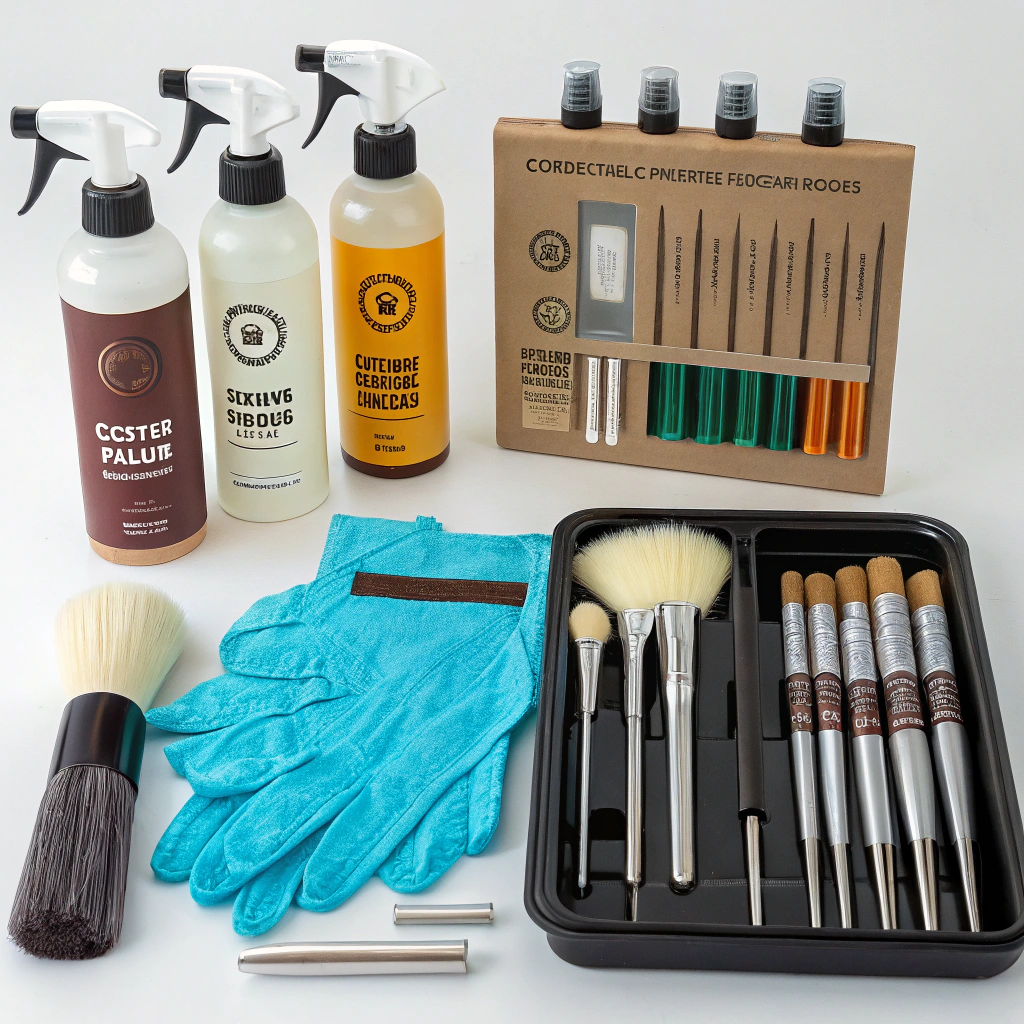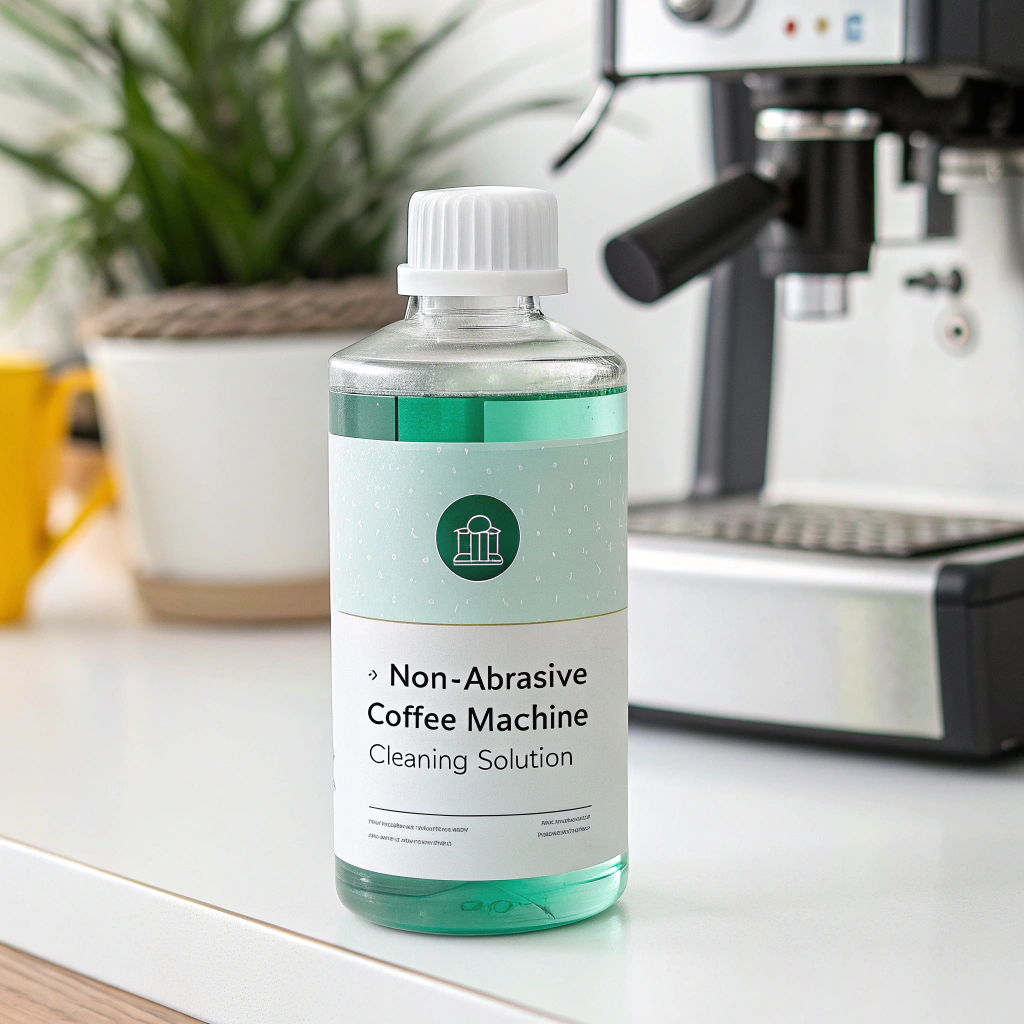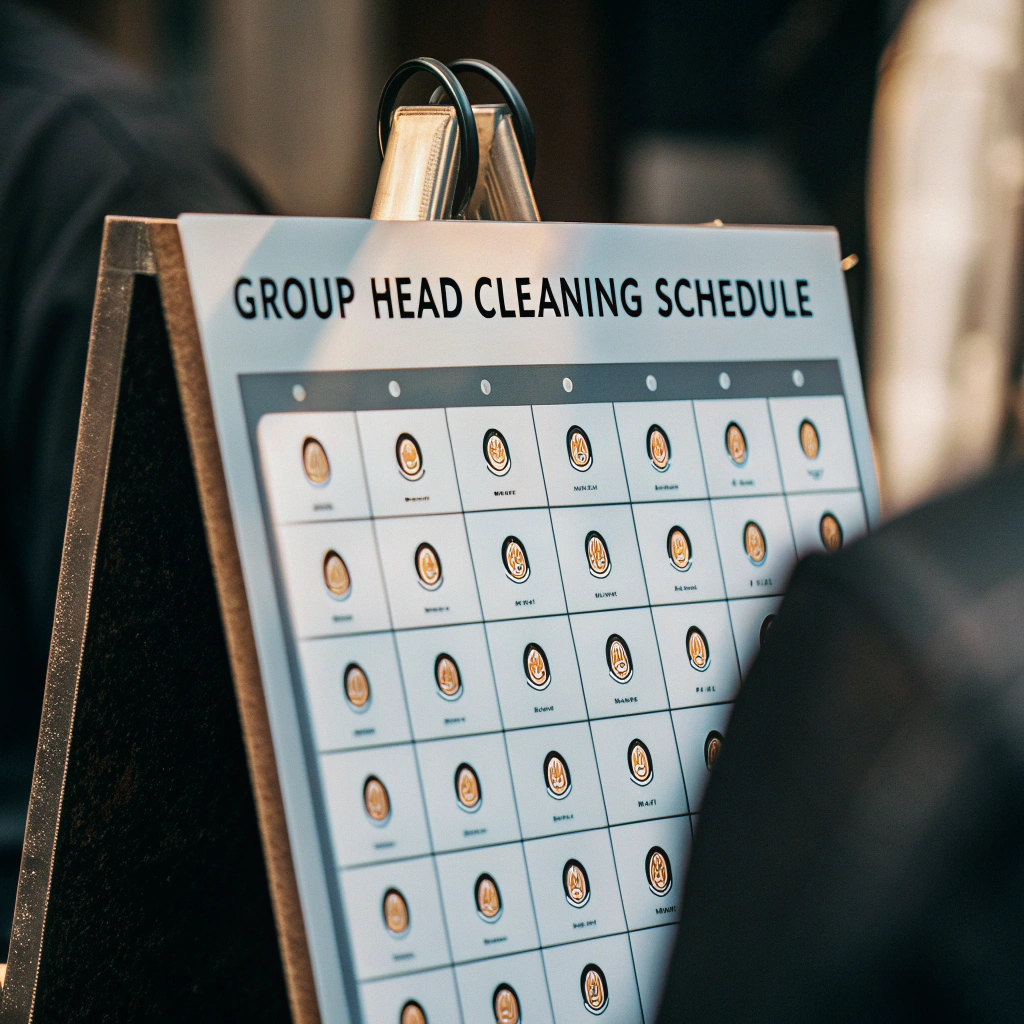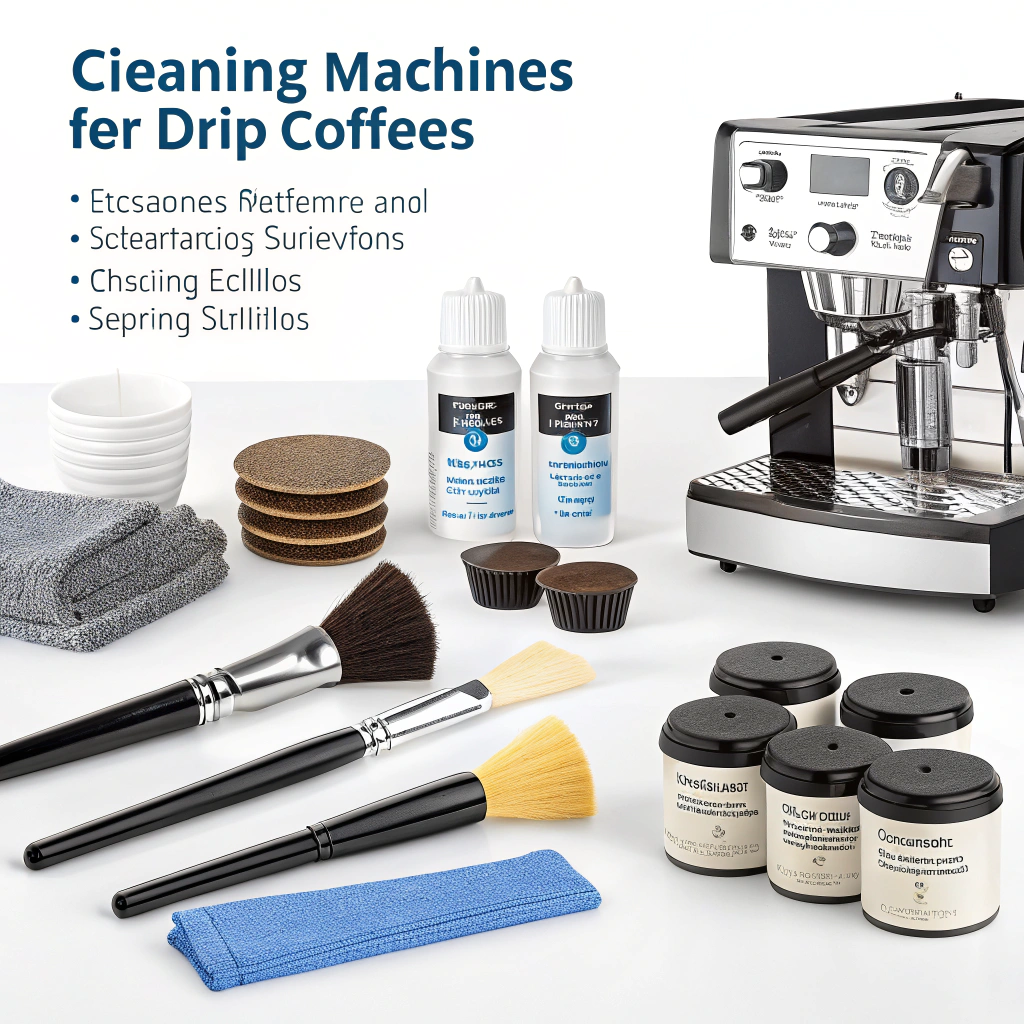Your coffee tastes bitter, and your expensive machine is underperforming. Hidden oils and scale are ruining every cup and slowly destroying your equipment. A complete coffee cleaning kit is your simple answer.
A coffee cleaning kit is essential maintenance. It uses non-abrasive solutions, descalers, and specialized brushes. Regular cleaning removes oils and limescale. This ensures better-tasting coffee and extends your equipment's life. This is key for both home and professional setups.

I've seen expensive machines fail for the simplest reasons. It often comes down to maintenance. A client in Dubai, let's call him Muhammad, once told me how inconsistent cleaning was costing him in repairs and customer complaints. He realized that providing cleaning kits alongside his machines was not just an upsell. It was essential for his brand's reputation. This conversation really opened my eyes. We all know cleaning is important, but what exactly should you use, and how often? Let's break it down.
What makes a cleaning solution good for your machine?
Using the wrong cleaner can scratch and damage your machine's internal parts. This damage is permanent. It leads to costly repairs and poor performance. Choose certified, non-abrasive formulas to protect your investment.
A good cleaning solution is non-abrasive to protect your machine's surfaces. Look for formulas that are biodegradable, odorless, and phosphate-free. These are safer for the machine, the user, and the environment. They won't leave any chemical taste in your coffee.

When we source materials for our SIF Coffee Tools products, we focus on safety and durability. This is why we have certifications like FDA and LFGB. The same logic applies to cleaning chemicals. You need something effective but gentle. Abrasive cleaners contain tiny, hard particles. They act like sandpaper on the metal and plastic parts inside your machine. This causes micro-scratches that can damage seals and accumulate more coffee gunk over time.
Choosing the Right Cleaning Agent
A great cleaning agent does its job without causing harm. For my clients, who are distributors, recommending the right products builds trust. Your customers will know you care about the longevity of their equipment. When you choose a supplier for cleaning products, ask them about the ingredients. An odorless, biodegradable formula is a huge selling point. It shows a commitment to both quality and the environment.
Here is a simple breakdown:
| Cleaner Type | Best For | Key Benefit |
|---|---|---|
| Non-Abrasive Powder/Tablet | Backflushing, removing coffee oils | Deep cleans without scratching internal parts. |
| Liquid Descaler | Removing mineral scale from boiler/thermoblock | Restores heating efficiency and water flow. |
| Biodegradable Formulas | All cleaning tasks | Environmentally friendly, no chemical aftertaste. |
Choosing the right cleaner isn't just about making the machine look good. It's about maintaining its performance and ensuring every coffee shot tastes exactly as it should.
How often should you really be cleaning your coffee equipment?
You think you clean enough, but residue is still building up inside. This hidden gunk makes your coffee bitter. It also puts a strain on your machine. A simple, regular cleaning schedule is all you need.
You should clean your coffee machine parts at different intervals. Group heads and portafilters need daily wiping and rinsing. Perform a backflush weekly. Descale the machine every one to three months, depending on water hardness and usage. This routine prevents buildup.

In my years of manufacturing coffee accessories, I've learned that consistency is more important than intensity. A small amount of daily care is much better than a heavy cleaning session once every few months. The buildup of coffee oils happens fast. These oils turn rancid and create a bitter, unpleasant taste that overpowers the fresh flavor of your beans. Limescale from water is another silent enemy. It clogs pipes and reduces the machine's ability to maintain a stable temperature, which is critical for good extraction.
A Practical Cleaning Schedule
I recommend a structured approach for my wholesale clients to pass on to their customers. A clear schedule removes all guesswork. It turns maintenance from a chore into a simple habit. For a commercial setting, the frequency might be higher, but the principles are the same. Here is a baseline schedule for a typical user.
| Frequency | Task | Why It's Important |
|---|---|---|
| After Each Use | Purge and wipe the steam wand. Rinse the portafilter. | Prevents milk residue from hardening and oils from contaminating the next shot. |
| Daily | Backflush with water. Brush the group head and shower screen. | Clears out loose coffee grounds and prevents them from baking onto the screen. |
| Weekly | Backflush with a cleaning tablet or powder. Soak baskets/portafilter. | Dissolves stubborn coffee oils that water alone can't remove. |
| Monthly | Descale the machine (or as needed based on water hardness). | Removes mineral buildup to ensure proper temperature and pressure. |
Following a schedule like this extends the life of the machine and guarantees the quality of the coffee. It’s a professional habit that every coffee lover should adopt.
Are all cleaning kits the same for different coffee makers?
You bought a generic cleaning kit, but it does not fit your machine. The wrong tools can be ineffective. They can even damage your specific equipment. Always match the cleaning kit to your machine type.
No, cleaning kits are not universal. Espresso machines require specific tools like grouphead brushes and backflush disks. Drip coffee makers need descalers for the water reservoir. Always check that the kit is compatible with your machine to ensure effective and safe cleaning.
 "Specialized Coffee Cleaning Tools")
"Specialized Coffee Cleaning Tools")
As a manufacturer, I create products for specific needs. Our precision coffee baskets are engineered for specific portafilter sizes and extraction styles. The same is true for cleaning tools. A tool designed for an E61 group head will not work properly on a drip coffee maker. Using the wrong tool is a waste of time and money. It can even lead to bigger problems.
Tools for Espresso Machines
For espresso machines, cleaning is very hands-on. You need a kit that includes:
- Group Head Brush: This usually has a curved neck to reach up into the group head to scrub away coffee grounds without burning your hands.
- Backflush Disk: This is a solid metal or rubber insert for your portafilter. It blocks water from exiting, forcing it back through the group head to flush out the system with a cleaning solution.
- Steam Wand Cleaner: A thin brush or probe to clear any milk residue from inside the steam wand tip.
- Cleaning Powder/Tablets: A concentrated formula specifically for removing coffee oils.
Cleaning Other Coffee Makers
For other types of machines, the needs are different:
- Drip Coffee Makers: The main challenge here is limescale in the water reservoir and heating element. A good kit will focus on a liquid or powder descaler. Cleaning the carafe to remove coffee stains is also important.
- Manual Grinders: For grinders like the ones we produce, cleaning involves disassembling the burrs and brushing away old coffee grounds and oils. You don't use water here. Some kits include special grinder cleaning pellets made from food-safe grains.
For a distributor like Muhammad in the UAE, offering machine-specific kits is a smart business move. It positions him as an expert and provides real value to his customers, from small cafes to large hotels.
Conclusion
In short, a specialized cleaning kit is a small investment. It protects your machine, guarantees great taste, and is crucial for any serious coffee business or enthusiast.




